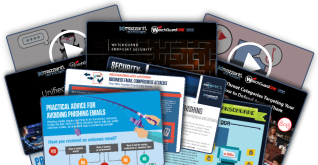Last week, you might have witnessed two very different marketing campaigns unfold—one, a B2C campaign for a new energy drink that went viral with dancing cats and witty one-liners; the other, a B2B campaign for enterprise software that generated millions in revenue with a detailed whitepaper about ROI optimization. Here’s our take: applying B2C tactics to B2B (or vice versa) is like trying to win a NASCAR race with a golf cart—wrong tool, wrong race.
The Decision Dance: Emotions vs. Evaluation
In B2C, emotions drive purchases. That energy drink campaign worked because it made your customers feel something instantly. Meanwhile, B2B decisions involve multiple stakeholders, lengthy approval processes, and complex ROI calculations. One tech company learned this the hard way when their “fun” B2B campaign generated plenty of social buzz but zero qualified leads.
If you’re supporting a B2B organization, you know that your buyers are looking for measurable business value, not just a clever joke.
The Sales Cycle Symphony: Instant Gratification vs. Long-Term Play
B2C marketing often aims for immediate action—see ad, feel emotion, buy product. Fashion retailers can track sales spikes minutes after posting on Instagram. B2B? Your sales cycles can last months or even years. One software company’s biggest deal started with a whitepaper download in 2021 and closed in 2023.
You need to nurture leads over time with valuable educational content and ongoing engagement.
The Content Contrast: Pop Hits vs. Classical Masterpieces
B2C content is like pop music—catchy, emotional, and designed for immediate impact. B2B content is more like classical music—complex, detailed, and appreciated by a specialized audience. If you’re marketing to senior engineers, memes might not hit the mark. Instead, offer in-depth resources like whitepapers, case studies, and technical documentation.
Consider building a comprehensive knowledge base or even a “university” section on your site. For example, one B2B company saw their biggest lead generation success after launching detailed technical courses.
The Price Perspective: Coffee vs. Software
When someone buys a $5 coffee, they might decide based on the cup design. But when your company spends $500,000 on software, you need ROI projections, security audits, and integration assessments. One B2B company increased conversions by 40% by adding detailed TCO calculators to their landing pages.
Highlighting security and ROI in your content is essential for B2B conversions.
The Platform Puzzle: Where Your Audience Lives
B2C thrives on Instagram and TikTok, while B2B dominates LinkedIn and industry-specific platforms. A B2B industrial supplier wasted months trying to build a TikTok presence before realizing their target audience was on LinkedIn reading technical articles.
Choose your platforms wisely. If you’re in B2B, focus on where your buyers are actually researching and making decisions.
The Language Barrier: Speak Their Language
B2C speaks the language of emotions and benefits—“Feel amazing!” B2B speaks the language of metrics and outcomes—“Reduce operational costs by 23%.” One B2B company transformed their conversion rates by switching from emotional appeals to data-driven case studies.
If you’re not already, start using case studies and technical proof points in your marketing materials.
The Relationship Reality: Transaction vs. Partnership
B2C often focuses on single transactions—buy this product now. B2B builds long-term relationships because each client represents significant lifetime value. A software company we know spends more on nurturing existing clients than acquiring new ones because each retained client is worth millions.
- Retention Focus: Invest in post-sale support, ongoing education, and regular check-ins to maximize client lifetime value.
- Personalization: Tailor your communication and services to each client’s unique needs.

The Education Equation: Deep Dives Required
B2C customers might research for hours. B2B buyers might research for months, requiring deep educational content. Providing resources like webinars, technical guides, and industry reports can position your firm as a trusted advisor.
The Trust Territory: Building Credibility
B2C builds trust through brand personality and user reviews. B2B builds trust through industry expertise and proven results. A B2B consulting firm doubled their conversion rates by publishing detailed technical analysis instead of traditional marketing content.
Showcase your security credentials and technical expertise to build confidence with your prospects.
The Budget Battle: Scale vs. Value
B2C marketing often works with smaller individual purchase amounts but larger customer bases. B2B deals with fewer customers but much larger deal sizes. This fundamentally changes how marketing budgets are allocated and ROI is calculated.
The Risk Reality: Careers on the Line
B2C purchases rarely risk someone’s career. B2B purchases can make or break professional reputations. That’s why B2B marketing focuses heavily on risk mitigation and social proof. One enterprise software company closes 80% of their deals by arranging calls with existing satisfied customers.
The Feature Focus: Specs Matter
B2C markets benefits and emotions. “Feel confident in your skin!” B2B markets features and specifications. “99.99% uptime with automatic failover.” A B2B technology company increased leads by 50% when they added detailed technical specifications to their marketing materials.
The Decision Chain: Multiple Stakeholders
B2C often targets individual decision-makers. B2B navigates complex buying committees with different priorities. Creating different content tracks for technical evaluators, financial decision-makers, and end-users can help streamline your sales process.
The Measurement Matrix: What Really Matters
B2C often measures success in immediate sales and brand awareness. B2B tracks longer-term metrics like qualified leads and sales pipeline value. One manufacturer stopped measuring social media engagement and started tracking whitepaper downloads—their real leading indicator of sales.
The Bottom Line: Know Your Audience, Choose the Right Tools
Understanding these differences isn’t just academic—it’s crucial for your marketing success. Whether you’re in B2B or B2C, using the right strategies for your audience is the difference between winning and wasting resources.
Remember those two campaigns? The dancing cats wouldn’t sell enterprise software, and detailed ROI calculations wouldn’t sell energy drinks. Success in marketing isn’t about following trends—it’s about understanding your audience and using the right tools for the job.
If you’re ready to elevate your B2B marketing strategy and want guidance tailored to your industry, contact eMazzanti today to learn how we can help you achieve measurable results.






